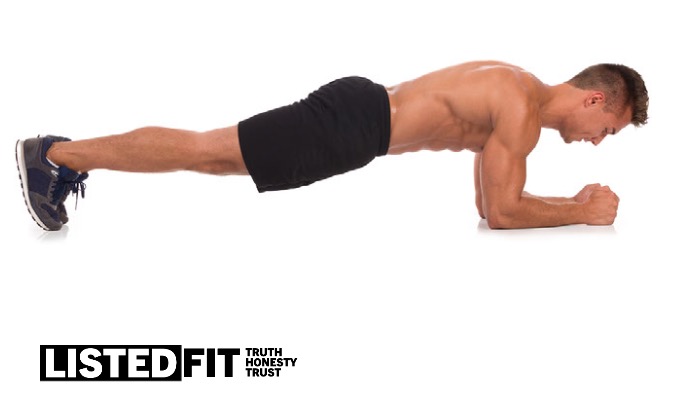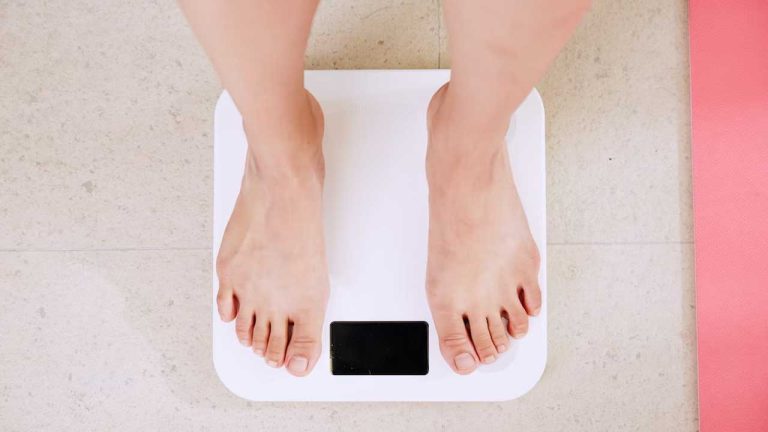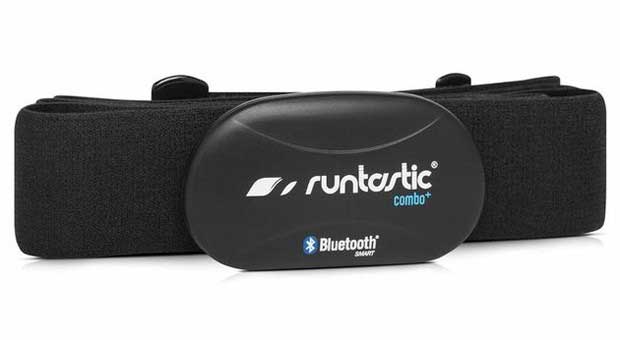Does Stomach Vacuum Work? The Secret to a Flatter Stomach?

ListedFit is reader-supported. When you buy through links on our site, we may earn a small commission.
Stomach vacuum exercises have gained considerable attention in recent times as people look for alternative ways to get a flat and toned midsection.
Steadily gaining popularity on social media platforms such as TikTok, this isometric core-strengthening exercise targets the deep abdominal muscles.
In this article, we will explore the effectiveness of the stomach vacuum exercise, its benefits, techniques, and how it compares to other core exercises.

The stomach vacuum exercise involves exhaling fully while drawing in your stomach in an attempt to engage your core muscles.
Specifically, it focuses on the transversus abdominis muscle, which lies beneath the more visible abdominal muscles.
Incorporating this practice into your fitness routine could lead to a more tucked-in belly and may even help alleviate back pain by strengthening your core.
But it’s important to understand how to perform the stomach vacuum exercise correctly and to acknowledge any limitations or risks associated with it.
Key Takeaways
- Stomach vacuum works by targeting your deep abdominal muscles, leading to a more toned midsection
- Incorporating this exercise into your routine can strengthen your core and potentially alleviate back pain
- Ensure you perform the stomach vacuum correctly and understand its limitations to avoid injury and maximise effectiveness.
Contents
What is the Vacuum Stomach Exercise?
The stomach vacuum is an exercise that targets your core, specifically the transversus abdominis muscle. This muscle is the deepest layer of your abdominal muscles and wraps around your abdomen horizontally, providing support to your spine and core. The exercise is also known as “stomach vacuuming” or “hollowing.”
As an isometric exercise, the stomach vacuum involves contracting and holding the transversus abdominis muscle without moving any other muscles.
Doing the stomach vacuum (in the right way) can help strengthen your core muscles, improve posture, and potentially reduce the appearance of your waistline.
To perform the stomach vacuum exercise, follow these steps:
- Stand or sit upright with your feet shoulder-width apart.
- Exhale completely, allowing your chest to sink in.
- As you inhale, pull your navel in towards your spine as far as you can.
- Hold the contraction for as long as you can, aiming for 5-20 seconds per repetition. Ensure that you can still breathe lightly during the hold.
- Release the contraction and return to your normal breathing pattern.
- Repeat the exercise several times, gradually increasing the duration of the hold as you become more comfortable with the technique.
It’s important to note that while the stomach vacuum can be beneficial for strengthening your core muscles and improving stability, it should not be relied upon as a sole method for achieving a slimmer waistline.
A good calorie-controlled diet with the right balance of macronutrients, regular resistance training and cardio are also essential components of a well-rounded fitness routine.
The Benefits of Stomach Vacuum Exercise
Improves Your Posture and Stability
The stomach vacuum exercise focuses on strengthening your core muscles, which play a crucial role in your overall posture and stability. By activating the transverse abdominis, pelvic floor muscles, and multifidus, you are improving your postural control and balance.
If you do it regularly, you’ll notice increased stability and better alignment of your spinal column, contributing to a more confident appearance.
Reduces Back Pain
Strengthening your core muscles will also help alleviate back pain.
A strong core provides support for your spine, reducing the pressure on your back muscles.
The stomach vacuum exercise specifically targets the deep core muscles, including the pelvic floor and multifidus, which are essential for maintaining spinal stability.
By incorporating this exercise into your routine, you can potentially alleviate discomfort associated with back pain caused by poor posture and weak core muscles.
Tightens Waist and Flattens Stomach
One of the most sought-after benefits of the stomach vacuum exercise is its ability to tone and flatten your abdomen. This is achieved by engaging your transverse abdominis (TA) muscle, which acts like a natural corset, pulling your waist inwards and creating a flatter appearance.
By consistently practising this exercise, you can expect a tighter waist and a more sculpted midsection.
How to Do The Stomach Vacuum in Various Positions
Standing Stomach Vacuums (Recommended)
To perform the stomach vacuum exercise in a standing position, stand upright with your feet hip-width apart.
Place your hands on your hips and take a deep breath in. As you exhale, pull your belly button in towards your spine, engaging your transversus abdominis muscle for an isometric contraction.
Hold this contraction for 10-15 seconds, then release and breathe in. Repeat this for 3-5 sets depending on your comfort level.
Kneeling Stomach Vacuums
In the kneeling position, start by placing both knees on the ground, hip-width apart and your hands on your thighs or hips. Take a deep breath, and as you exhale, draw your belly button in towards your spine again. This engages the same muscle as in the standing position. Hold the contraction for 10-15 seconds before releasing and breathing in. Perform 3-5 sets as well, depending on your comfort level.
Stomach Vacuum while Sitting Down
The seated stomach vacuum can be done at your desk or in a chair. Sit upright with your feet flat on the ground.
Place your hands on your knees or thighs. Follow the same breathing pattern as before: inhale deeply, then exhale and draw your belly button in towards your spine, engaging the transversus abdominis muscle.
Hold the isometric contraction for 10-15 seconds, then release and breathe in. Repeat this for 3-5 sets.
Lying Down
For the supine position, lay down on your back with your knees bent and feet flat on the floor. Place your hands beside your hips. Take a deep breath in and, as you exhale, pull your belly button in towards the spine.
Hold the contraction for 10-15 seconds before relaxing and inhaling again. Complete 3-5 sets.
Does Holding in Your Stomach Help Flatten It?
Holding in your stomach, also known as the stomach vacuum exercise, can indeed help to flatten your stomach.
The main purpose of this exercise is to strengthen the transverse abdominis muscle, which is the deepest layer of your abdominal muscles. By doing so, you can create a slimming effect on your waistline.

When starting out, you may only be able to hold the contraction for 10-20 seconds. As you become more proficient, aim to increase the duration of the hold to 30 seconds or more.
Try to perform 3 sets of this exercise in each session.
It’s important to note that while stomach vacuum exercises may help flatten your stomach to some extent, they should be complemented by a balanced diet and regular cardiovascular and strength training to achieve the best results.
As with anything, patience and consistency are key, as the effects may not be immediately noticeable but will become more evident over time.
Is Stomach Vacuum Safe?
The stomach vacuum exercise involves exhaling air while sucking in your stomach to engage your core muscles.
It is often considered a safe and effective method for toning your inner abdominal muscles and aiding in body fat reduction.
But, just like any other exercise, it’s important to understand the potential side effects and precautions you should take to ensure that it is safe for you.
Stomach Vacuum Exercise Side Effects
When performing the stomach vacuum exercise, you may experience some side effects. These can include:
- Lightheadedness: Holding your breath while engaging your core muscles could cause lightheadedness, particularly if you’re new to this type of exercise. To minimise this risk, make sure to breathe steadily throughout the exercise.
- High blood pressure: If you already have high blood pressure, take extra care before starting this exercise. Consult a doctor if you have to. Holding your breath can lead to an increase in blood pressure, potentially posing a risk for those with high blood pressure (hypertension).
- Strain on internal organs: Because this exercise involves drawing in your abdomen, it may lead to increased pressure on your internal organs such as the stomach and intestines. It is essential to perform the exercise correctly and in moderation to prevent unnecessary strain on your torso.
To ensure that the stomach vacuum exercise is safe and beneficial for you, make sure you follow the proper technique and listen to your body when practising.
If you feel discomfort or experience any of the mentioned side effects, stop the exercise.
Performing a stomach vacuum isn’t something that should cause you extreme discomfort at all.
Remember that achieving benefits from the stomach vacuum exercise requires consistency and proper form, so it’s crucial to approach it with patience and commitment.
Comparing Stomach Vacuum to Other Core Exercises
Plank and Planks

There are other well-known core exercises that you might be more familiar with, such as the plank.
The plank is an excellent move for building core strength and stability.
Planks primarily target the rectus abdominis and the transversus abdominis muscle, which are essential for maintaining a strong core and supporting the lower back.
While plank exercises are effective, stomach vacuuming offers a unique benefit: working the deeper core muscles in a short amount of time.
In comparison, planks may build more visible muscles in your abdomen.
Crunches

Crunches are another common core exercise, mainly targeting the rectus abdominis. Although they can help you gain abdominal definition, crunches do not activate the transverse abdominis as effectively as stomach vacuuming. Additionally, crunches may strain the neck and lower back if performed incorrectly. Therefore, incorporating stomach vacuuming into your routine can offer a safe addition or alternative when aiming to strengthen your core while reducing the risk of injury.
Pilates

Finally, let’s discuss Pilates. As a holistic exercise system, Pilates is designed to strengthen and stabilise your entire body, making it a well-rounded choice for core training. Pilates exercises often engage the transversus abdominis muscle, as well as other essential core muscles, contributing to improved posture, stability, and flexibility.
Just like stomach vacuuming, Pilates can be an effective and low-impact method for targeting the deeper core muscles. However, Pilates involves a series of movements and progression that require more time and dedication compared to the simple technique of stomach vacuuming.
The stomach vacuum exercise provides unique benefits that traditional core exercises such as planks, crunches, and Pilates may not deliver in isolation.
While these other exercises have their advantages, combining them with stomach vacuuming may be the best approach to achieving a strong and supported core. Remember to always consult with a fitness professional before starting any new exercise routine.
Frequently Asked Questions
Are stomach vacuums effective for weight loss?
Stomach vacuums can be useful for strengthening your core muscles, specifically the transversus abdominis.
But they are not a direct or comprehensive solution for weight loss on their own. To effectively lose weight, you should combine cardiovascular exercises, strength training, and a balanced calorie-controlled diet.
Can stomach vacuums cause hernia?
Stomach vacuums, when performed correctly, should not cause a hernia.
But if you already have a pre-existing hernia or are at a greater risk of developing one you may need to adjust your approach slightly.
I would also say for those recovering from hernias as well to make sure they are not doing further damage by performing a stomach vacuum.
If you need to, check with a medical practitioner before going in too heavily on core exercises.
Can stomach vacuums help with bloating?
While stomach vacuums can help in toning and strengthening the core muscles, they may not have a direct impact on bloating.
To address bloating, consider monitoring your diet and avoiding foods that cause gas and discomfort.
Drinking water, eating slowly, and incorporating probiotics can also help alleviate bloating.
What are the potential side effects of stomach vacuum exercises?
If performed correctly, the stomach vacuum should not cause you any side effects apart from some muscle soreness in the abs if you’re not used to working that area.
If performed improperly, stomach vacuums could potentially cause strain on the neck, shoulders, and lower back.
Ensure you follow the correct technique and consult a fitness professional to avoid any potential side effects.
How long does it take to see stomach vacuum results?
The time it takes to see results from stomach vacuum exercises varies for each individual and largely depends on factors such as consistency, proper technique, and overall fitness level.
If done in the right way, results can be seen within the space of two weeks.
It is essential to maintain a regular exercise routine and be patient while awaiting visible results.
Are stomach vacuums associated with hernia risk?
As mentioned earlier, performing stomach vacuums correctly should not pose a risk for hernia development.
But if you have concerns or a pre-existing condition, consult a medical professional before incorporating the stomach vacuum exercise.
What is the proper technique for performing stomach vacuums?
To perform a stomach vacuum correctly, follow these steps:
1. Stand or sit upright, with a neutral spine.
2. Exhale all the air from your lungs by pursing your lips and blowing.
3. As you exhale, suck in your stomach as much as possible and try to touch your navel to your spine.
4. Hold the contracted position for up to 20 seconds (or as long as you can maintain proper form).
5. Release the stomach contraction and inhale.
6. Repeat the process for several repetitions.
7. Remember always to use proper form and build up your endurance gradually.
Using some of the YouTube videos featured in this article can help you perform the exercise safely and effectively.
Author
-
Stuart Patrick is a health and fitness lifestyle journalist who writes for ListedFit.com.
“I've spent a lot of time trying to get in shape and change my body and I realised there are so many untruths in the health and fitness industry that can slow down or stop your progress, so I share my knowledge and experience to help others to cut through the BS.”
Latest entries
 MacaMarch 17, 2024Which is Better: Black or Red Maca? Comparing Benefits and Uses
MacaMarch 17, 2024Which is Better: Black or Red Maca? Comparing Benefits and Uses FitnessFebruary 18, 2024Join the Discount Club Today!
FitnessFebruary 18, 2024Join the Discount Club Today! KitchenFebruary 5, 2024Best Almond Milk-Making Machines 🥛 Cheap vs Expensive?
KitchenFebruary 5, 2024Best Almond Milk-Making Machines 🥛 Cheap vs Expensive? Barefoot ShoesDecember 18, 2023Can Barefoot Shoes Be Bad for You? Exploring the Potential Downsides
Barefoot ShoesDecember 18, 2023Can Barefoot Shoes Be Bad for You? Exploring the Potential Downsides
Affiliates:
This post may contain affiliate links that at no additional cost to you, the site may earn a small commission. We only recommend products we would use ourselves and all opinions expressed on this site are our own.
General Advice:
The information provided in this article is for general informational purposes only. It is not intended as a substitute for professional advice. Always consult with a qualified healthcare professional before starting any new diet, exercise program, or making changes to your health routine.
Accuracy Advice:
While we strive to provide up-to-date and accurate information, the content in this article may not reflect the most current research or medical guidelines. We encourage readers to do further research and consult with professionals for more personalized advice.
Our Recommendations:
The products and services mentioned in any of our articles are recommended based on our independent research and personal experience. We are not sponsored by any company. We aim to suggest products and services we believe are of high quality and could be beneficial to our readers.






